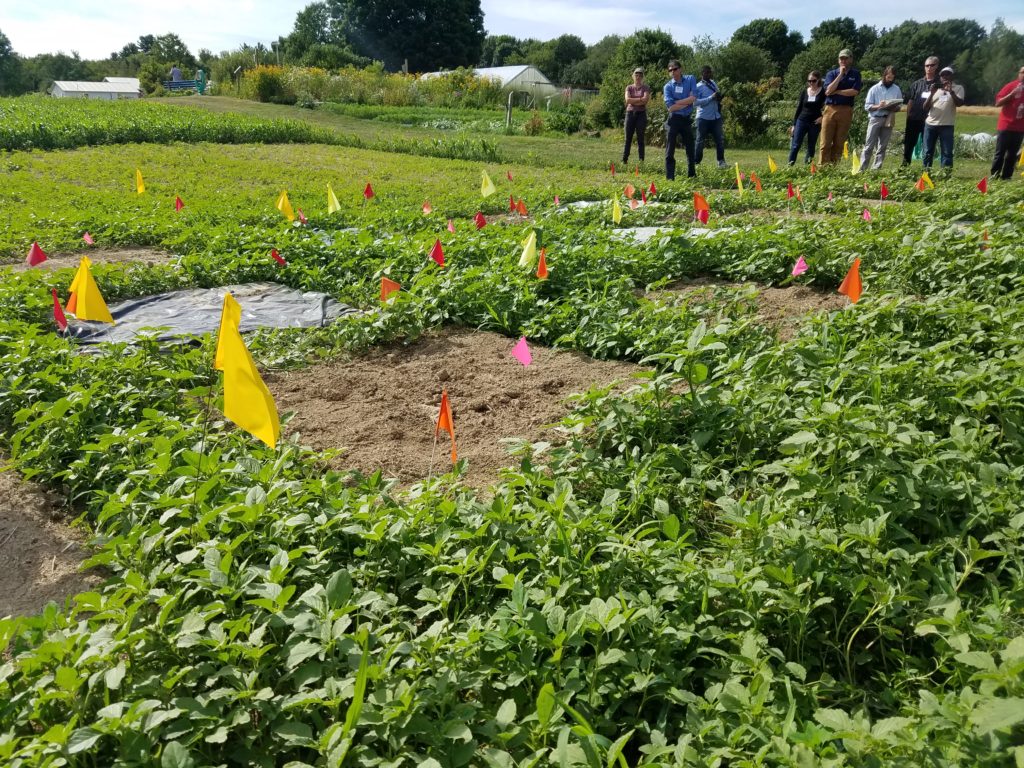
This is the second post in a multi-part blog series analyzing the draft farm bill released on June 7, 2018 by the Senate Agriculture Committee. Subsequent posts focus on: organic agriculture, local/regional food systems and rural development, beginning and socially disadvantaged farmers, and crop insurance and commodity subsidies. The bill will be considered and “marked-up” (aka amended) by the full Agriculture Committee on June 13 and on the Senate floor later this month. We expect further improvements to the food system provisions in the bill during mark-up and will report on those through updated and future posts.
Overall research and plant breeding programs fared far better in the Senate Agriculture Committee’s draft version of the farm bill than in the House bill, which was voted on and rejected last month. We were pleased to see that many recommendations made in our 2018 Farm Bill Platform were included in the Senate Committee’s draft language. Though not all of our recommendations made it into the bill, we still believe that overall this draft provides an excellent starting point from which to move forward on our goals for agricultural research and breeding programs.
Research and extension programs that receive mandatory farm bill funding were re-authorized in the Senate’s draft and given the proper funding needed to ensure they are able to keep up with the evolving challenges facing the agricultural sector. We were also pleased to see the inclusion of public plant breeding provisions that will help to ensure that our farmers have access to the most productive and well-adapted seeds for their operations, geographies, and climates. We thank both Committee Chairman Pat Roberts (R-KS) and Ranking Member Debbie Stabenow (D-MI) for working across the aisle to ensure that America has the research and breeding resources needed for a safe, secure, and sustainable food and farm future.
Below, we include a summary of the key takeaways on how the Chairman’s mark addresses research and plant breeding policies and programs in the Senate Committee’s draft farm bill.
Highlights
- Reauthorizes and increases funding for the Organic Agriculture Research and Extension Initiative (OREI). The Senate bill gradually increases OREI funding to $50 million a year by 2023, more than double its current level of $20 million a year. This long-overdue and very welcome increase also brings the program to permanent mandatory funding. Permanent baseline funding means that OREI would receive at least this level of funding in perpetuity, rather than having to negotiate funding from scratch every five years when a new farm bill is revisited. The rejected House bill, in contrast, would have increased funding by just $10 million a year and would not have brought the program to permanent baseline funding
- Strengthens and consolidates two important training and technical assistance programs that support the next generation of farmers and ranchers – the Beginning Farmer and Rancher Development Program (BFRDP) and the Outreach and Assistance to Socially Disadvantaged and Veteran Farmers and Ranchers Program (Section 2501). These programs are combined to create the new Farming Opportunities Training and Outreach Program (FOTOP) and given permanent baseline funding of $50 million a year. The failed House bill retained but did not increase funding and did not establish permanent baseline funding.
- Enhances public cultivar development and plant breeding efforts by:
- Calling for the development and implementation of a national strategic germplasm and cultivar collection assessment and utilization plan that works to address lapses in research of and access to public cultivars. The plan will be available to the public on completion.
- Re-authorizing the National Genetics Resources Program and restructuring the National Genetics Resources Advisory Council (NGRAC) to include more positions; specifically requires that these appointed positions are filled by individuals with plant and/or animal breeding experience.
- Requires that NGRAC provide recommendations to improve cultivar development research, including funding, training, and ways to improve the national strategic germplasm and cultivar collection assessment and utilization plan.
- Upgrades the U.S. Department of Agriculture’s (USDA) Under Secretary for Research, Education and Extension (REE) by continuing the current law designation of the REE Under Secretary as the Chief Scientist of the entire Department. The bill also improves staffing for the office. Both of these improvements are in line with recommendations made by NSAC and the agricultural research community. These provisions will empower the Chief Scientist, as well as improve scientific coordination, oversight and integrity, increase responsiveness, and raise the profile of food and agricultural research within the federal research community and worldwide.
- Eliminates the across-the-board match requirement for all National Institute of Food and Agriculture programs, which was added to the farm bill in 2014. The elimination of this requirement will make those programs more competitive and equitable for institutions with fewer financial resources.
- Provides simple, yet important, re-authorizations for crucial programs for the sustainable agriculture community, such as the Sustainable Agriculture Research and Education Program, Specialty Crop Research Initiative, and the National Sustainable Agriculture Information Service.
Lowlights
While many of NSAC’s recommendations on research and plant breeding programs were included in some form or another in the Senate mark, there were a few outstanding items that we still hope to see added to the bill as the process moves forward.
- Fails to include clarifying definitions or a minimum-funding requirement to help the advancement of public cultivars as proposed in the Seeds for the Future Act (S. 2964).
- Fails to create a Strategic Investment Fund (SIF) in the Office of the Chief Scientist (as recommended to congressional leadership by a group of over 70 agriculture research stakeholders in October 2017). SIF would work to improve collaboration in addressing emerging opportunities with respect to pressing societal challenges, especially those requiring urgent emergency responses or those that require more than one agency.

